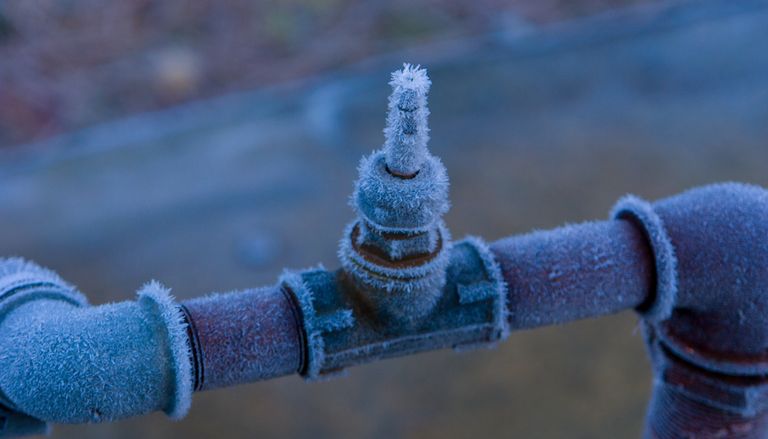Protecting Against Frozen Plumbing: Best Strategies for Cold Weather
Protecting Against Frozen Plumbing: Best Strategies for Cold Weather
Blog Article
Almost everyone maintains their personal theory with regards to Winter Plumbing Precautions: Preventing Frozen Pipes.

Winter can ruin your plumbing, specifically by freezing pipes. Right here's how to prevent it from occurring and what to do if it does.
Intro
As temperature levels decline, the risk of frozen pipelines increases, possibly bring about pricey repair work and water damage. Understanding just how to avoid icy pipes is crucial for property owners in cool environments.
Understanding Icy Pipes
What creates pipelines to freeze?
Pipelines freeze when subjected to temperature levels listed below 32 ° F (0 ° C) for expanded periods. As water inside the pipes ices up, it increases, taxing the pipe walls and possibly causing them to rupture.
Dangers and damages
Icy pipelines can bring about water disturbances, building damage, and costly fixings. Burst pipelines can flood homes and create extensive architectural damages.
Indications of Frozen Pipeline
Recognizing frozen pipes early can prevent them from bursting.
Just how to recognize icy pipes
Seek decreased water circulation from faucets, unusual odors or noises from pipelines, and noticeable frost on revealed pipelines.
Avoidance Tips
Insulating susceptible pipes
Cover pipes in insulation sleeves or use heat tape to protect them from freezing temperatures. Focus on pipes in unheated or outside locations of the home.
Home heating techniques
Keep interior spaces sufficiently warmed, especially areas with plumbing. Open up closet doors to allow cozy air to flow around pipelines under sinks.
Securing Exterior Plumbing
Garden hoses and exterior taps
Detach and drain yard hose pipes before winter. Mount frost-proof spigots or cover exterior taps with protected caps.
What to Do If Your Pipelines Freeze
Immediate actions to take
If you suspect frozen pipes, maintain faucets available to relieve stress as the ice melts. Use a hairdryer or towels soaked in warm water to thaw pipes slowly.
Long-Term Solutions
Structural changes
Think about rerouting pipes far from exterior wall surfaces or unheated locations. Include added insulation to attic rooms, basements, and crawl spaces.
Updating insulation
Invest in top quality insulation for pipelines, attics, and walls. Correct insulation aids preserve regular temperatures and reduces the danger of icy pipes.
Final thought
Avoiding frozen pipes requires positive steps and fast responses. By recognizing the reasons, signs, and preventive measures, house owners can shield their pipes throughout cold weather.
5 Ways to Prevent Frozen Pipes
Drain Outdoor Faucets and Disconnect Hoses
First, close the shut-off valve that controls the flow of water in the pipe to your outdoor faucet. Then, head outside to disconnect and drain your hose and open the outdoor faucet to allow the water to completely drain out of the line. Turn off the faucet when done. Finally, head back to the shut-off valve and drain the remaining water inside the pipe into a bucket or container. Additionally, if you have a home irrigation system, you should consider hiring an expert to clear the system of water each year.
Insulate Pipes
One of the best and most cost-effective methods for preventing frozen water pipes is to wrap your pipes with insulation. This is especially important for areas in your home that aren’t exposed to heat, such as an attic. We suggest using foam sleeves, which can typically be found at your local hardware store.
Keep Heat Running at 65
Your pipes are located inside your walls, and the temperature there is much colder than the rest of the house. To prevent your pipes from freezing, The Insurance Information Institute suggests that you keep your home heated to at least 65 degrees, even when traveling. You may want to invest in smart devices that can keep an eye on the temperature in your home while you’re away.
Leave Water Dripping
Moving water — even a small trickle — can prevent ice from forming inside your pipes. When freezing temps are imminent, start a drip of water from all faucets that serve exposed pipes. Leaving a few faucets running will also help relieve pressure inside the pipes and help prevent a rupture if the water inside freezes.
Open Cupboard Doors
Warm your kitchen and bathroom pipes by opening cupboards and vanities. You should also leave your interior doors ajar to help warm air circulate evenly throughout your home.

As an enthusiastic reader about How to Prevent Your Pipes From Freezing, I was thinking sharing that topic was smart. Sharing is nice. Helping people is fun. Thanks for your time invested reading it.
Suggested Site Report this page